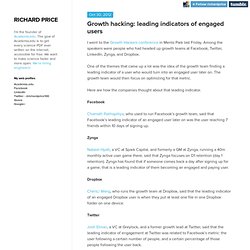

Freemium BM. (1) What consumer Internet companies had a large number of users but failed to monetize.
The subscription economy is here. Are you ready? Editor’s note: This story is part of our Microsoft-sponsored series on cutting-edge innovation.

Tien Tzuo is founder and CEO of Zuora, an online subscription billing and payment company. Just as the Web rocked the bricks and mortar world of business 15 years ago, the burgeoning subscription economy is forcing today’s enterprises to change how they do business. Subscriptions used to be just for newspapers and magazines, but not anymore. The last 10 years have seen a dramatic increase in companies using the subscription model to offer everything from music, movies and textbooks to even cars for a monthly fee. Every day, more and more traditional players are joining the “subscription economy” in response to changing consumer habits. But what will it take to succeed in this new world? Consider BMW versus Zipcar. Forget fire sales, seasonal specials, and other brute-force price promotions.
Developing this kind of operationalized pricing capability should be a major focus in the years ahead. Business Model Analysis, Part 6: LTV and CAC. This post is part of a series on business model analysis for entrepreneurs.

The first post in the series presents a comprehensive list of issues (available as a downloadable PDF) entrepreneurs should consider when designing a business model. Others delve into specific issues; this one provides an overview of customer lifetime value (LTV) and customer acquisition cost (CAC) calculations, and how they are used in startups. [Case Study] How a Pay-What-You-Want Pricing Model Can Generate More Revenue. Multi-axis Pricing: a key tool for increasing SaaS revenue. Scalable pricing is a powerful tool to grow revenue in a SaaS or software business. It allows you to capture more of the revenue that your customers are willing to pay, without putting off smaller customers that are not able to pay high prices.
It also provides a great way to continue to grow revenue from your existing customers. This post looks at how to create scalable pricing using multiple pricing axes, and discusses the different types of axes that can be used. Introduction Many SaaS startups begin life with one product that has a simple pricing model. However as time progresses, they may hear comments like: “I would have been happy paying far more for your product as it provides such great value to me”“I didn’t consider your product as it was too cheap, and didn’t look like a credible option to handle our more advanced needs”“I only needed a subset of your functionality, and your product was too expensive” Let’s look at these to items separately: Emotional Willingness to Pay 1. 2. 3.
Growth hacking: leading indicators of engaged users - Richard Price. I went to the Growth Hackers conference in Menlo Park last Friday.

Among the speakers were people who had headed up growth teams at Facebook, Twitter, LinkedIn, Zynga, and Dropbox. One of the themes that came up a lot was the idea of the growth team finding a leading indicator of a user who would turn into an engaged user later on. The growth team would then focus on optimizing for that metric. Here are how the companies thought about that leading indicator. Facebook Chamath Palihapitiya, who used to run Facebook’s growth team, said that Facebook’s leading indicator of an engaged user later on was the user reaching 7 friends within 10 days of signing up. Zynga Nabeel Hyatt, a VC at Spark Capital, and formerly a GM at Zynga, running a 40m monthly active user game there, said that Zynga focuses on D1 retention (day 1 retention). Dropbox Twitter LinkedIn.